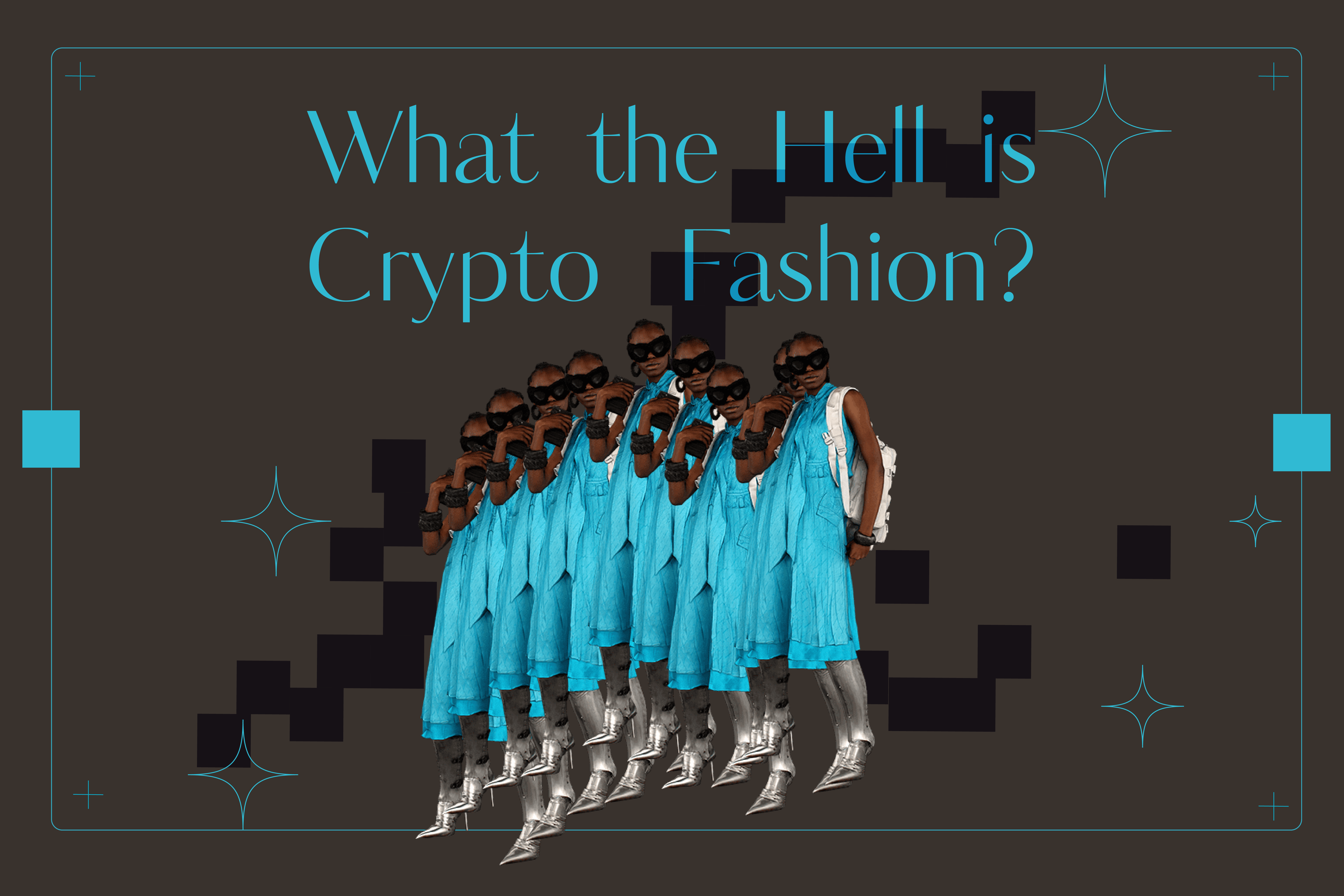In late February of 2021, Crypto Fashion Week premiered as a digital presentation by collecting avant-garde designers to showcase digitally rendered fashion designs. These designs live in the digital realm. Meaning you could wear them through Augmented Reality (AR) technology in photographs or possibly in video games. Due to their virtual existence, these designs can adapt to their surroundings or the person who is “wearing” them. For example, a cyber design could change color depending on your mood. These futuristic and utopian designs are bought as Non-Fungible Tokens.
I’m sure you’re asking yourself, “how am I supposed to understand what an NFT (Non-Fungible Token) is, I don’t even know what the word ‘fungible’ means?” It’s not as confusing as it sounds, I promise. An NFT is a piece of data representing a digital file that can be bought, sold, or traded. Similar to how one could buy, sell, or trade a physical object. While the buyer owns the original file, viewers can download, screenshot, or copy the file for zero cost. It’s a similar concept to viewing a painting in a museum. You can photograph it, but you still don’t own it. The NFT file itself (not its copies or screenshots) is what holds value. The information of who owns a certain NFT is stored on the database, Blockchain.
In an article written by Nylon, one of the Crypto Fashion Week co-founders, Lady Ph0enix, said, “Digital fashion might overtake physical sales sooner than we think. Especially now, during COVID, people aren’t dressing to impress anywhere but the internet.”
Call me old-fashioned, but that quote is a hard pill to swallow for me. Heightened by the pandemic, it is clear that there is a shift in the fashion calendar and collections’ physical presentations. In the past year of lockdown, fashion companies have had to shift and experiment with innovative ways to present their designs. In June of 2020, Hanifa’s virtual presentation broke boundaries of how they presented their clothing in the absence of physical models. Three months later, Raf Simons and Miuccia Prada debuted their first collaborative collection, with an interview following the show. Who could ever forget the release of the Balenciaga video game that came out in December of 2020? These three presentations are just an ounce of the ways that creatives have innovated in their presentations in just the past year. It is important to note that although these collections were showcased either virtually or physically with no audience, the clothes displayed went into physical production.
The concept of crypto fashion is that it lives entirely in the virtual realm – and for some reason, that makes me upset. The idea of purchasing (at a hefty price tag nevertheless) a piece that we can only see through our screens is a concept that I’m not ready to subscribe to. Maybe it’s wishful thinking. I found solace in those April days of 2020 when I would get dressed up to go to an 8 a.m. zoom class in my basement. I bought clothes that were occasion-less for months. Still, the suspense and excitement of the day I finally got to show off a new outfit on the street felt like a light at the end of the tunnel.
I believe that clothes belong on bodies; Like, real-life, physical, completely tangible bodies. Clothing should be felt and lived in and broken down and then built back up again. The idea of a design made by and for an alternate reality of the internet doesn’t sit right with me.
With all of that being said, there were beautiful designs showcased at Crypto Fashion Week (my favorite collection was by Stephy Fung). My feelings on crypto fashion are not meant in any way to discredit the fantastic digital work. I think it’s fabulous and dare I say… camp?
Innovation in fashion is essential in its repositioning of how we see the industry. But what frightens me is the reduction of fashion to the simplicity of wearing something only for our screens. There are a ridiculous amount of problems in the fashion industry, but I believe fashion is worth fighting for. There is something so unique and intimate about feeling a garment in a store. I’m sure that most reading this article have dreamt of watching designs grace the runways of New York, Milan, Paris, or London. Physical clothes matter beyond the value they hold online – they are highly personal. Call me antiquated or over-sentimental, but I do not believe that virtual clothing will outgrow physical clothing anytime soon.
Words by Nicholson Baird.
Graphic by Emily Tobias.

